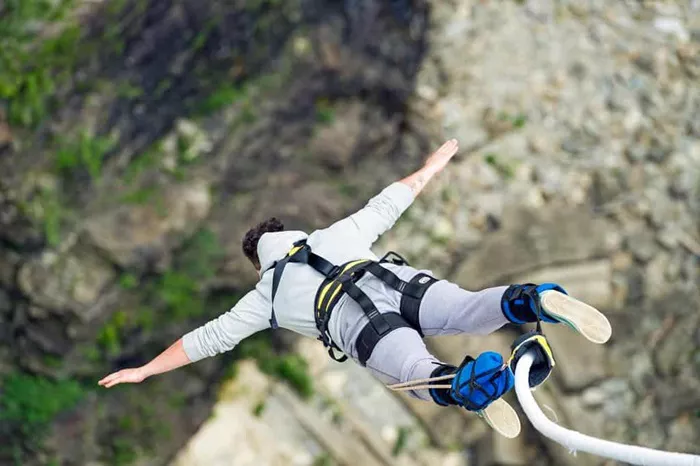Bungee jumping is a thrilling adventure sport that attracts adrenaline seekers from all over the world. However, behind the excitement and exhilaration lies a critical focus on safety, which is paramount to ensure the well-being of jumpers. One of the crucial safety measures in bungee jumping is the enforcement of minimum weight requirements. These requirements are not arbitrary but are based on scientific principles and engineering considerations designed to protect participants from harm. This article delves into the reasons behind the minimum weight restrictions in bungee jumping, exploring the physics, engineering, and safety protocols that make these limits essential.
The Physics of Bungee Jumping
The Role of Gravity and Mass
Bungee jumping relies on the fundamental principles of physics, particularly the interplay between gravity and mass. When a person jumps off a platform, gravity pulls them downwards, accelerating their fall. The mass of the jumper affects the gravitational force exerted on them, which in turn influences the tension and elongation of the bungee cord. A minimum weight requirement ensures that the gravitational force is sufficient to stretch the bungee cord appropriately, providing a controlled and safe descent.
Elasticity and Hooke’s Law
The bungee cord acts as an elastic material that obeys Hooke’s Law, which states that the force exerted by an elastic object is proportional to its extension. The cord must be able to stretch and recoil effectively to absorb the kinetic energy of the falling jumper. If a jumper’s weight is too low, the cord may not stretch enough to slow the descent gradually, resulting in a jerky and potentially dangerous stop. This can lead to whiplash or other injuries, underscoring the importance of maintaining a minimum weight threshold.
see also: How Many People Go Bungee Jumping Each Year?
Engineering Considerations
Bungee Cord Specifications
Bungee cords are engineered with specific weight capacities in mind. They are designed to accommodate a range of weights within certain safety margins. The minimum weight limit ensures that the cord’s elasticity is within the optimal range for safe operation. Exceeding or falling below this range can compromise the cord’s performance, leading to safety risks.
Platform and Harness Design
The platforms and harnesses used in bungee jumping are also designed with weight specifications. The structural integrity of the platform must withstand the dynamic forces generated during a jump. Similarly, harnesses are constructed to distribute the jumper’s weight evenly and securely. A minimum weight requirement ensures that these components function as intended, providing stability and support throughout the jump.
Safety Protocols and Risk Management
Preventing Undue Stress on Equipment
Ensuring that jumpers meet the minimum weight requirement helps prevent undue stress on the bungee cord and related equipment. Lightweight jumpers may not generate enough force to engage the cord fully, leading to inadequate deceleration. This can cause excessive wear and tear on the cord, reducing its lifespan and reliability. By enforcing weight limits, operators can maintain the equipment’s integrity and ensure consistent performance.
Mitigating Injury Risks
Bungee jumping involves inherent risks, and safety protocols aim to minimize these risks as much as possible. Jumpers who do not meet the minimum weight requirement are at a higher risk of experiencing a harsh stop at the end of their fall, which can lead to injuries such as whiplash, fractures, or dislocations. The minimum weight limit is a precautionary measure to protect jumpers from such outcomes, ensuring that the deceleration forces are within safe limits.
Psychological and Physiological Factors
The Psychological Impact of Weight Limits
The enforcement of weight limits also has psychological implications. Jumpers who are aware of the minimum weight requirement may feel reassured that the activity is being conducted with their safety in mind. This can enhance their overall experience, reducing anxiety and allowing them to enjoy the thrill of the jump with confidence.
Physiological Considerations
From a physiological perspective, lighter individuals may have different physical responses to the stresses of bungee jumping. The sudden deceleration and the forces exerted on the body can be more pronounced in lighter jumpers, potentially leading to adverse effects such as increased heart rate, blood pressure changes, or dizziness. The minimum weight requirement helps mitigate these physiological stresses, promoting a safer and more enjoyable experience.
Industry Standards and Regulations
Adherence to International Standards
Bungee jumping operators adhere to international standards and regulations that dictate safety protocols, including weight requirements. These standards are established by organizations such as the International Association of Bungee Jump Operators (IABJO) and the European Bungee Jumping Association (EBJA). Compliance with these standards ensures that operators maintain high safety levels and protect participants from harm.
Regulatory Compliance
In many regions, bungee jumping is subject to regulatory oversight by government agencies or local authorities. These regulations often include stipulations on weight limits to ensure the safety of participants. Operators must comply with these regulations to maintain their licenses and operate legally. Adhering to minimum weight requirements is a critical aspect of regulatory compliance, demonstrating a commitment to safety and professionalism.
Conclusion
Bungee jumping is an exhilarating sport that offers a unique blend of adventure and adrenaline. However, the safety of participants is paramount, and the enforcement of minimum weight requirements plays a crucial role in ensuring this safety. These requirements are grounded in the principles of physics and engineering, designed to protect jumpers from harm and maintain the integrity of the equipment. By understanding the reasons behind these weight limits, participants can appreciate the careful planning and precautions that go into making bungee jumping a thrilling yet safe experience. Whether you are a seasoned jumper or a first-time thrill-seeker, adhering to weight requirements is essential for enjoying the sport to its fullest while minimizing risks.
related topics:
- The Risks And Realities Of Bungee Jumping Injuries: What You Need To Know
- The Thrill Of The Plunge: Understanding The Speed Of Bungee Jumping
- The 10 Most Amazing Bungee Jumping Spots In The World

